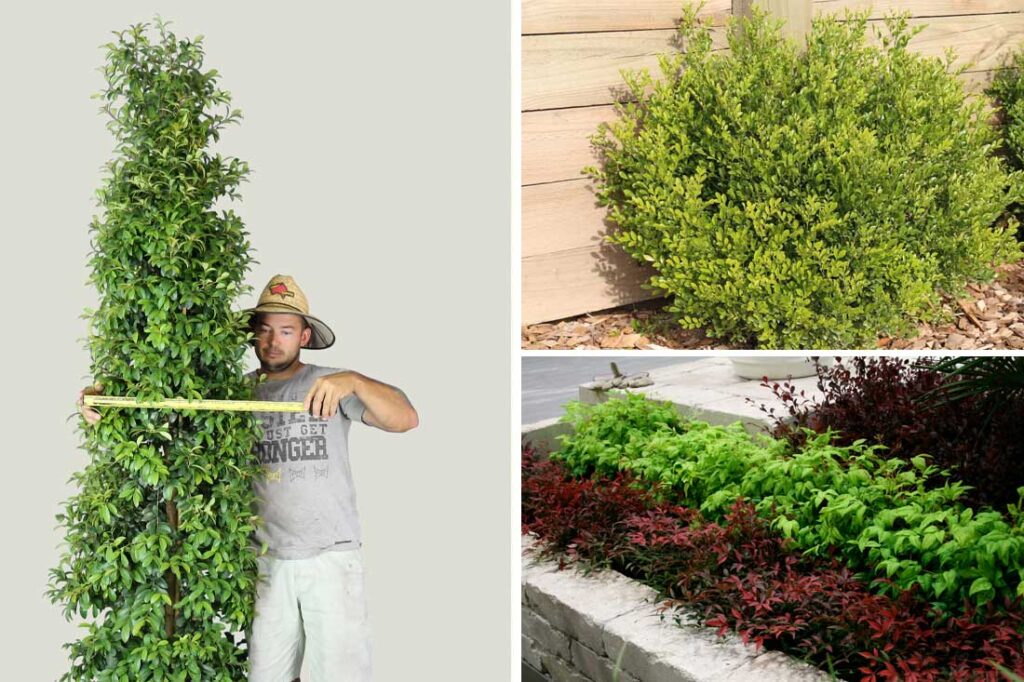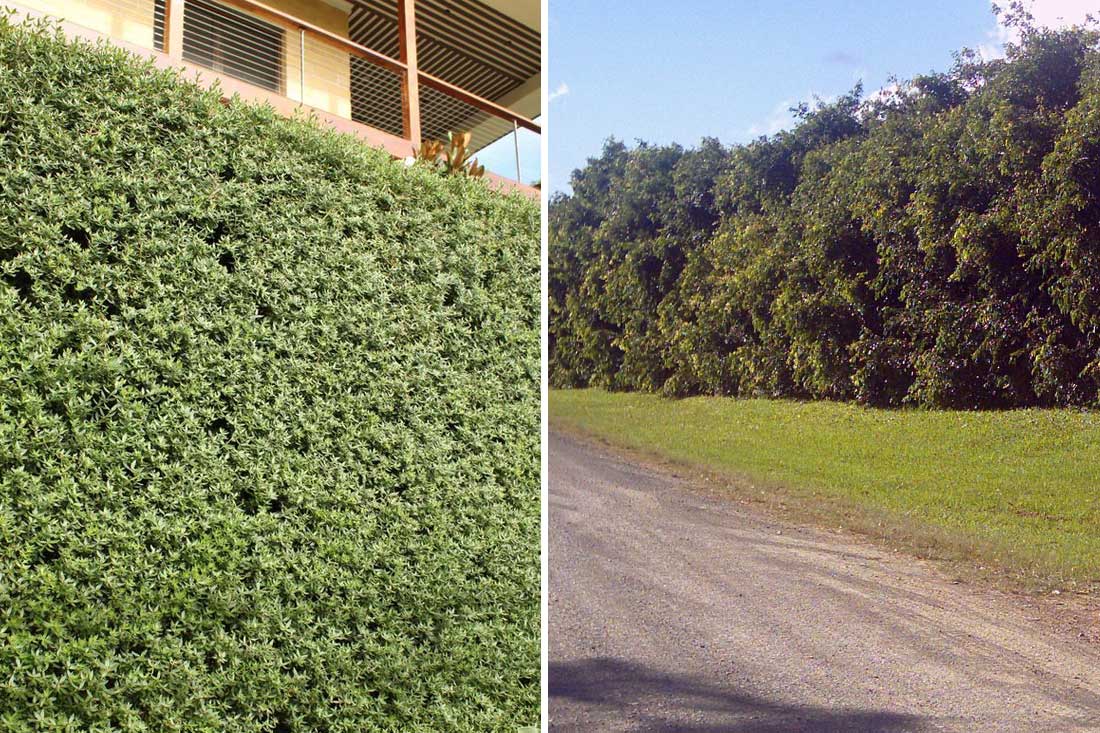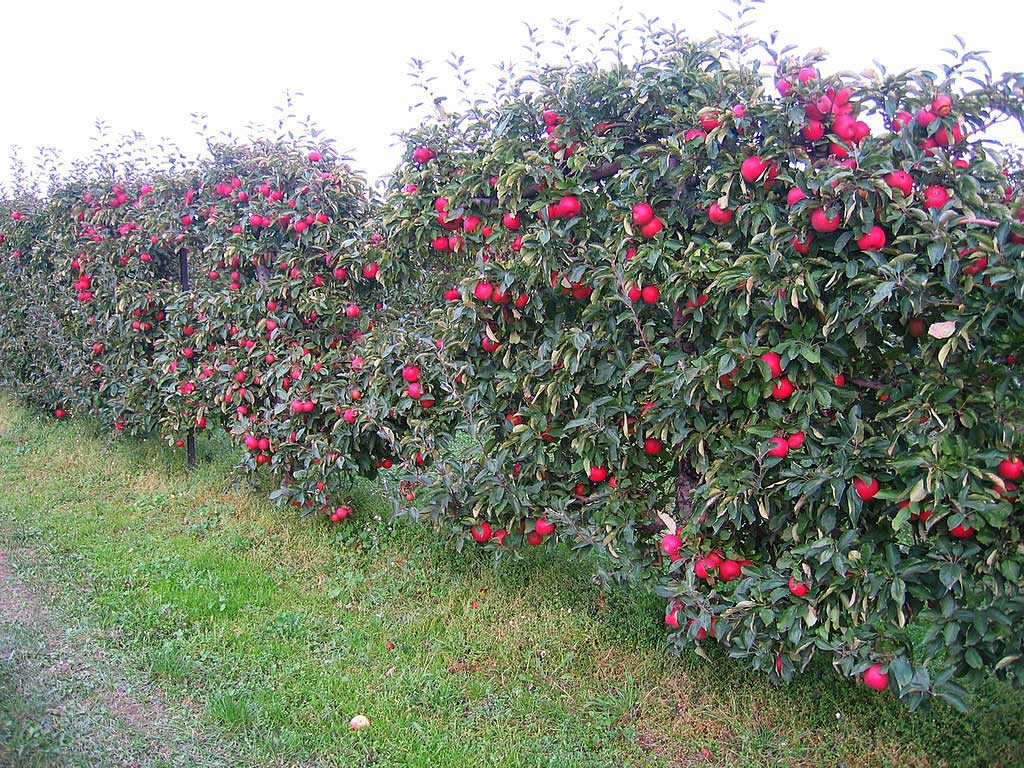Brisbane, the capital city of Queensland, Australia, boasts a humid subtropical climate characterised by hot, humid summers and mild, dry winters. This climatic condition significantly influences horticultural practices and landscape design within the region.
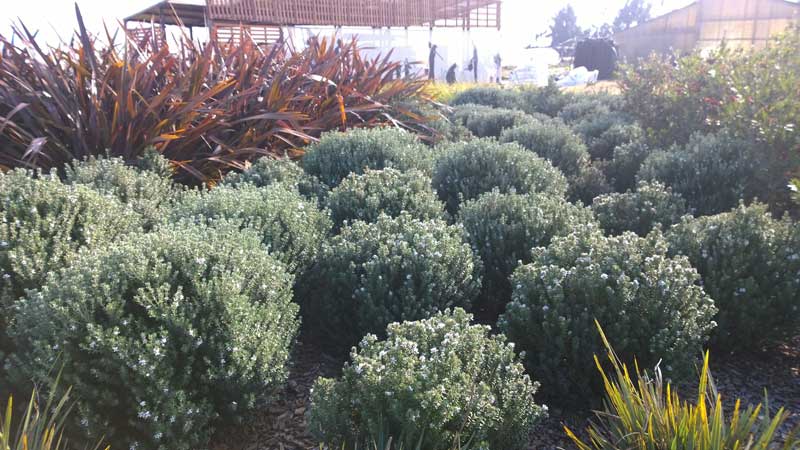
Grey Box™ Westringia is a great low hedge that landscape architects love for mass planting, border definition, and topiary.
General Climate Characteristics
Brisbane’s climate features several key elements:
- Temperature: Summer temperatures frequently exceed 30°C, while winter temperatures are usually mild, ranging between 10°C and 25°C.
- Rainfall: The region receives the majority of its annual rainfall during summer, often in the form of intense thunderstorms. Unfortunately, due to a dependance on quick drainage and a lack of rain gardens to help soak the water into the sub-soil water table, much of that water is lost to stormwater drains. Winter tends to be drier, although I feel I should note that this year (2024) we’ve seen a number of cold, drizzly days.
- Humidity: High humidity levels in the summer months can influence plant growth and increase the risk of fungal diseases.
Factors Limiting the Plant Palette
Several factors limit the types of plants that can thrive in Brisbane:
- Heat Tolerance: Plants must withstand high summer temperatures.
- Humidity Resistance: Species need to endure prolonged periods of high humidity.
- Drought Tolerance: Although summers are wet, sporadic dry spells necessitate plants that can survive without frequent watering.
- Pest Resistance: The warm climate supports numerous pests, requiring resilient plant species.
- Soil Adaptability: Soil types vary, necessitating plants adaptable to different soil conditions.
Necessary Plant Characteristics
To thrive in Brisbane’s climate, plants generally need:
- Heat and Sun Tolerance: Ability to survive intense sunlight and heat.
- Humidity Resistance: Capability to avoid diseases associated with high humidity.
- Drought Tolerance: Efficient water usage or drought resistance.
- Pest Resistance: Natural resilience to common pests in the area.
- Adaptability: Versatility to grow in varied soil conditions, from sandy to clay-heavy soils.
Varied Microclimate Conditions
Brisbane’s landscapes and gardens exhibit diverse microclimates influenced by several factors:
- Slopes: Slopes can lead to erosion and require plants with strong root systems to stabilise the soil. North-facing slopes receive more sunlight, creating warmer conditions, while south-facing slopes are cooler and shadier.
- Shade Levels: Shade conditions vary, with some areas receiving full sun and others deep shade. Plants must be selected according to their light requirements.
- Drainage: Good drainage is crucial to prevent root rot and other moisture-related issues. Raised beds or mounds can improve drainage in areas with heavy soil.
- Irrigation: Supplementary irrigation may be necessary during dry periods. Efficient irrigation systems help conserve water.
- Soil Types: Brisbane features a variety of soil types, including sandy and clay soils. Soil amendments and the selection of appropriate plants for each soil type are essential.
- Wind Exposure: Open areas might be subject to strong winds, necessitating wind-resistant plants or protective windbreaks.
Specifying Hedges: Key Considerations for Landscape Architects
When specifying hedges in Brisbane’s diverse climate, landscape architects need to take into account a multitude of factors to ensure the selection not only thrives but also enhances the overall landscape. Hedges can serve various functions, ranging from practical applications like screening and windbreaks to aesthetic contributions such as adding seasonal interest and supporting biodiversity.
Key Factors to Consider
- Resilience: Given Brisbane’s hot summers and occasional dry spells, choosing resilient hedge species that can withstand extreme weather conditions is crucial. Plants should be able to handle high temperatures, humidity, and potential drought conditions. Local pest and disease resistance is another part of resilience.
- Growth Rate: The growth rate of a hedge is a significant consideration. Fast-growing hedges are suitable for quick coverage, while slow-growing varieties might be preferred for their lower maintenance requirements.
- Screening: Hedges are often used for screening to provide privacy or block unsightly views. Dense foliage and appropriate height are essential characteristics for effective screening hedges.
- Wind Break: In areas subject to strong winds, hedges can function as windbreaks. For this purpose, tall, hardy species with sturdy branches and dense leaves are ideal to buffer and reduce wind speed.
- Lining Borders: For defining garden boundaries or pathways, low to medium-height hedges with neat shapes are typically used. These hedges should be kept pruned to maintain a tidy appearance.
- Size and Shape: The desired size and shape of the hedge must align with the overall landscape design. Some projects may require formal, tightly clipped hedges, while others might benefit from informal, naturalistic growth patterns.
- Colour and Texture: Hedges contribute to the visual texture and colour palette of a garden. Variegated leaves, different shades of green, and unique leaf textures can add depth and interest.
- Seasonal Interest: To enhance year-round appeal, selecting hedge plants that offer seasonal changes such as flowers, berries, or changes in foliage colour is beneficial. This ensures the hedge remains visually interesting throughout the year.
- Biodiversity Support: Hedges can support local wildlife by providing habitats, food sources, and shelter. Choosing species and those that produce flowers, berries and seeds can attract birds, insects, and other beneficial fauna.
- Maintenance Requirements: The level of maintenance the hedge will require, including pruning frequency, pest management, and watering needs, should be considered. Low-maintenance varieties are often preferred by landscape architects for long-term sustainability.
- Soil and Site Conditions: Understanding the specific soil type and site conditions within the garden is essential. Some hedge species prefer well-drained soils, while others may tolerate heavier clay soils.
Incorporating these considerations ensures that the hedge not only serves its primary function but also contributes positively to the overall landscape design. A well-chosen hedge can provide structure, beauty, and ecological benefits, making it a vital element in any landscape architecture project.
5 Hedge and Screening Plants Loved By Brisbane Landscape Architects
As a horticultural advisor for Ozbreed, I get to speak with landscape architects around the country. Of course, they each have their own favourite hedging plants for different scenarios, but here are five plants that I’ve seen landscape architects fawn over in Brisbane as well as the Sunshine Coast and Gold Coast.
Grey Box™ Westringia fruticosa ‘WES04’ PBR
Grey Box™ Westringia is a compact, drought-tolerant native shrub with grey foliage and white flowers from September to May. It is ideal for low hedges, topiary, borders, containers, and mass plantings. Landscape architects love it because it’s a native alternative to buxus that thrives in the humidity of Brisbane. It’s also tolerant of both drought and flooding, so it’s a good option for non-irrigated, poorly-draining positions.
Size: Unpruned, it reaches 45cm in height and width (except in wet feet where it can grow much larger); pruned, it maintains a size of 30cm high and 30cm wide.
Climate Tolerance: Suitable for QLD, NSW, ACT, VIC, TAS, SA & WA. It thrives in full sun to light shade, tolerating most soil types, frost, humidity, flooding and drought.
Care Instructions: Water as needed for 8-13 weeks until established. Mulch well with chunky mulch and use slow-release fertiliser in spring if necessary. Prune 1-3 times a year after flowering for a tidier shape or leave unpruned for a natural form.
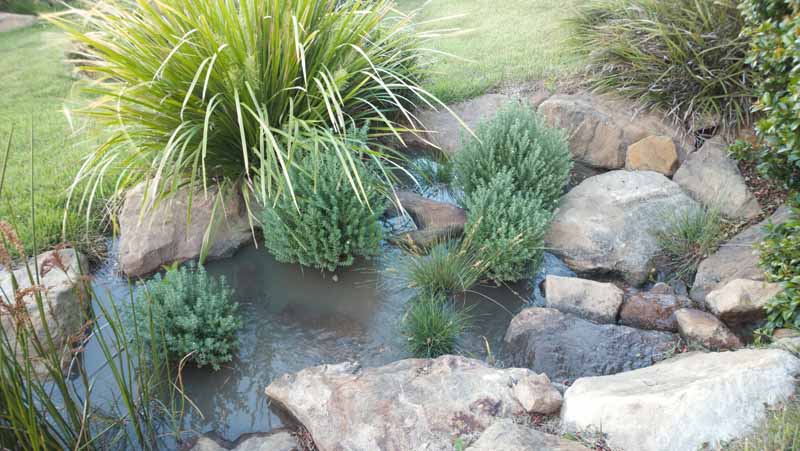
Flirt™ Nandina domestica ‘MURASAKI’ PBR
Flirt™ Nandina is a low-growing, spreading plant with red new growth in spring, autumn, and summer. Unlike other Nandinas, it is green in winter. Landscape architects love it in borders and mass planting because of the seasonal colour and because it does not spread from seed, making it a safer choice around bushland.
Size: 30-40cm high and 40-50cm wide.
Climate Tolerance: Suitable for QLD, NSW, ACT, VIC, TAS, NT, SA & WA. Tolerates full sun to moderate shade, drought, and cold. Adapts to free-draining to heavy clay soils.
Care Instructions: Water as needed for 8-13 weeks until established. Plant in a well-mulched garden using chunky mulch. Use slow-release fertiliser in spring if necessary. Prune every 3-4 years if required.
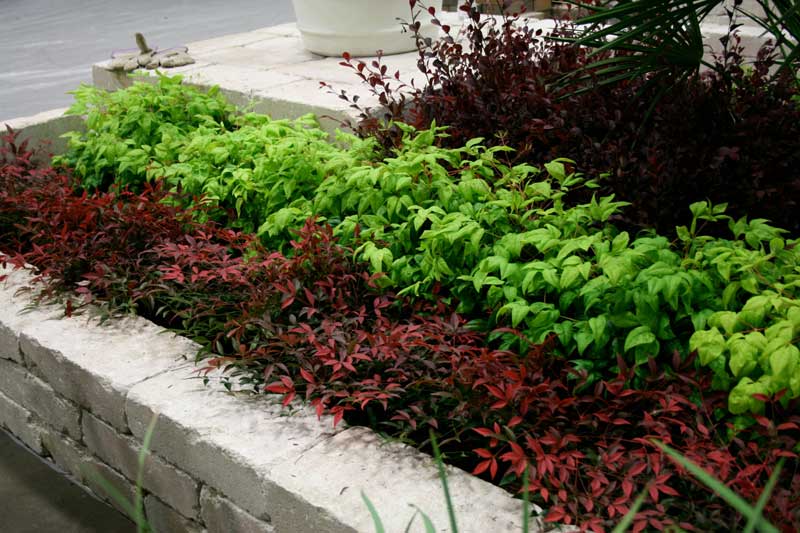
https://www.ozbreed.com.au/plant-ranges/hardy-exotic-range/flirt-nandina/
Sweet Privacy™ Murraya paniculata ‘MP01’ PBR
Sweet Privacy™ Murraya is a low-maintenance shrub with beautiful, fragrant white flowers in spring, late summer, and early autumn. It’s ideal for screening or hedging. Landscape architects love it because it saves clients money through its slow growth and low pruning needs, and its small leaves make small spaces appear larger.
Size: 1.8-2.5m high and 1.5m wide.
Climate Tolerance: Suitable for QLD, NSW, NT, VIC, SA & WA. Thrives in full sun to part shade and works with most soil types.
Care Instructions: Water as required for 8-13 weeks until established. Plant in well-mulched garden beds using chunky mulch. Fertilise annually with slow-release fertiliser. Prune twice per year, or three times for very tight hedging.
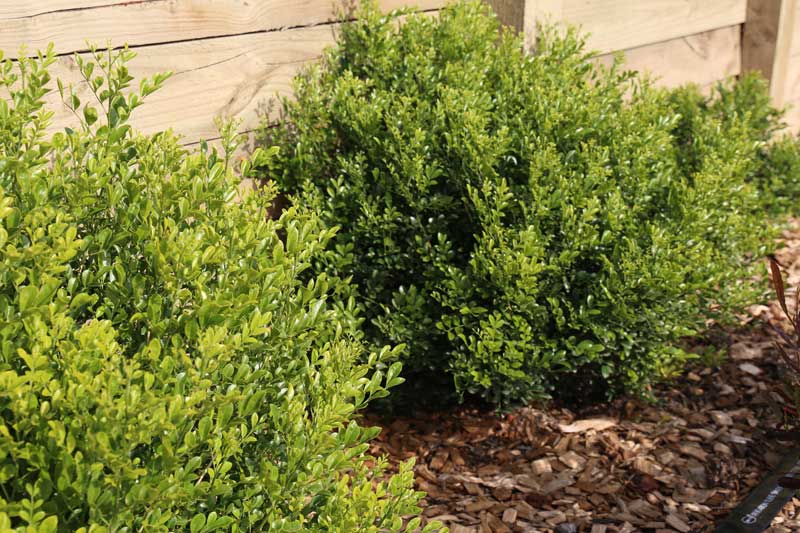
https://www.ozbreed.com.au/plant-ranges/hardy-exotic-range/sweet-privacy/
Slim™ Callistemon viminalis ‘CV01’ PBR
Slim™ Callistemon is a tall, narrow bottlebrush ideal for tight planting areas, producing abundant flowers in spring, summer, and autumn. Landscape architects love this hedge because it’s both myrtle rust and phytophthora resistant, while also being tolerant of drought and flooding and needing pruning only once every year or so to maintain its shape. This is not a plant you need to babysit.
Size: 3m high and 1.3m wide, growing larger when unpruned.
Climate Tolerance: Suitable for QLD, NSW, ACT, VIC, TAS, SA & WA. Tolerates full sun to part shade, drought, wet feet, humidity, and frost.
Care Instructions: Water as required for 8-13 weeks until established. Plant in a well-mulched garden using chunky mulch. Apply slow-release fertiliser in spring if necessary. Prune 1-3 times a year after flowering for desired shape and tidiness.
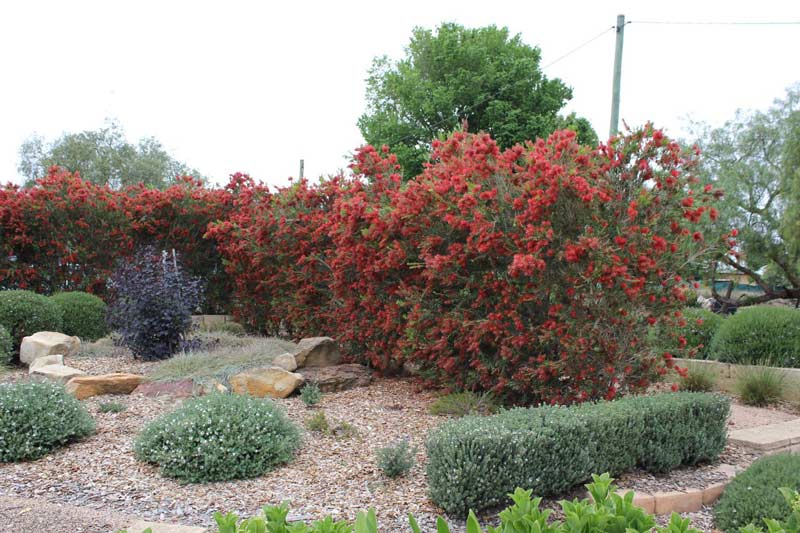
Straight and Narrow™ Syzygium australe ‘SAN01’ PBR Intended
Straight and Narrow™ Syzygium is a slender, semi-compact plant with tight, attractive leaves, white flowers, and pink/red fruit. Its columnar growth habit is ideal for narrow spaces. Landscape architects love it because of its slender growth habit which requires less pruning to keep tight, as well as its natural psyllid resistance.
Size: 5-8m high and 1-1.5m wide; can be pruned down to 2m. Will get larger if left unpruned.
Climate Tolerance: Suitable for QLD, NSW, VIC, SA, WA & ACT (if protected from frosts). Thrives in full sun to shade and moist, well-drained soils.
Care Instructions: Water as required for 8-13 weeks until established. Use chunky mulch and slow-release fertiliser in spring if necessary. Prune twice yearly for a tidy hedge or every 2-3 years as a natural screen.
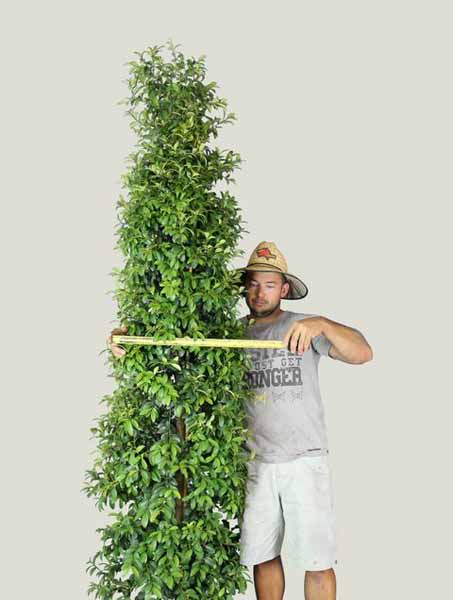
https://www.ozbreed.com.au/plant-ranges/native-shrubs-groundcovers/straight-and-narrow/
Conclusion
Designing landscapes and selecting plants for Brisbane involves considering both the city’s overall climate and specific microclimatic conditions. The above-mentioned shrubby hedging plants are favoured by landscape architects in Brisbane because they can not just tolerate the local conditions, but they can thrive. Meanwhile, each plant is fulfilling several functions within the landscape, whether that’s topiary, privacy, wind break, disease resistance or biodiversity support.

